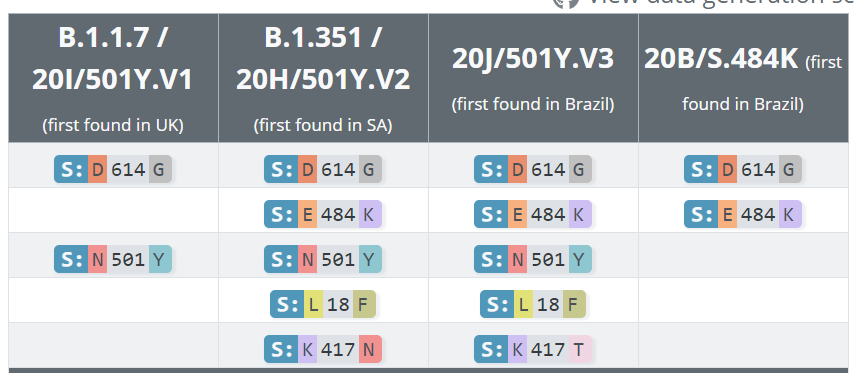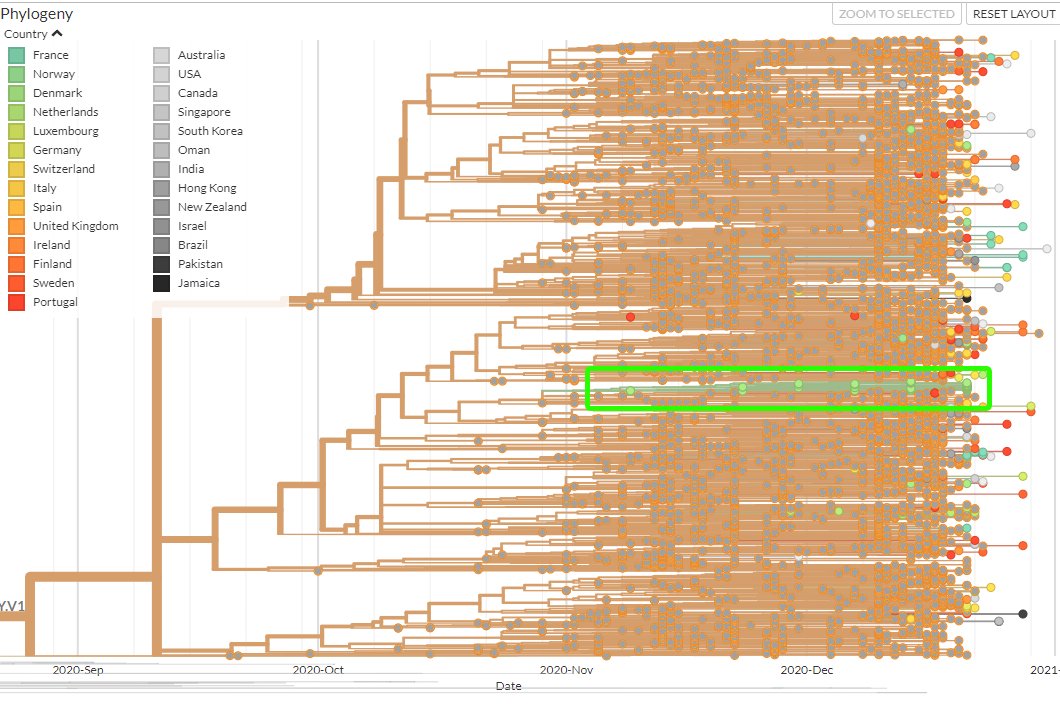Authors Theo Sanderson
7 days
30 days
All time
Recent
Popular
1/ Today has brought a lot of news about 'variants', as we discover community transmission of B.1.351 (SA variant) in the UK.
But some of the people who study these genomes have increasingly started focusing on a different concept: 'constellations', which may be more useful.

2/ We're actually all using 'variant' wrong anyway – we're using it to refer to a 'lineage'. A lineage is a set of viruses descended from a common ancestor. All B.1.1.7 (UK variant) viruses descend from an infection that probably occurred in August or September.
3/ But what makes this lineage practically important is that it carries a set of mutations which make it more transmissible.
I.e. we don't really care about the ancestry in itself.
4/ For example, one of the mutations that we think is important to B.1.1.7's faster transmission is called N501Y.
5/ It turns out that a lot of the lineages identified as important recently, in Brazil, South Africa, and the UK, have mutations such as N501Y in common (figure adapted from https://t.co/lpJeW0GGnU)

But some of the people who study these genomes have increasingly started focusing on a different concept: 'constellations', which may be more useful.

2/ We're actually all using 'variant' wrong anyway – we're using it to refer to a 'lineage'. A lineage is a set of viruses descended from a common ancestor. All B.1.1.7 (UK variant) viruses descend from an infection that probably occurred in August or September.
3/ But what makes this lineage practically important is that it carries a set of mutations which make it more transmissible.
I.e. we don't really care about the ancestry in itself.
4/ For example, one of the mutations that we think is important to B.1.1.7's faster transmission is called N501Y.
5/ It turns out that a lot of the lineages identified as important recently, in Brazil, South Africa, and the UK, have mutations such as N501Y in common (figure adapted from https://t.co/lpJeW0GGnU)

1/ Some people are looking at this map and saying: "it must have come from Europe". Here are a few reasons why that is unlikely.
2/ Though B.1.1.7 was especially prominent in Kent, the 2nd sequence ever sequenced was found in London, a day after the 1st. Due to superspreading it isn't possible to pinpoint for sure whether it originated in Kent or London. (If London, there's no argument for the continent).
3/ And suppose we did believe the new variant was introduced from abroad. Would we expect it to be introduced by sea or air? Far more arrivals to the UK in August/September occurred by air compared to sea.
4/ Genetic evidence. Suppose this highly transmissible variant had arisen in some other country, and made its way through France to the UK. It would also have left lots of descendants in Europe. We can look at a genetic tree of sequences and see that that is not the case.

5/ The grey/orange sequences here are UK sequences and the others are from an array of other countries. Specifically I've highlighted a lineage in Denmark which represents spread from a single introduction to Denmark, ultimately from the UK.
The spread of B.1.1.7 through England over November and December, with London inset at top-right. pic.twitter.com/fVfL0xijcx
— Theo Sanderson (@theosanderson) January 8, 2021
2/ Though B.1.1.7 was especially prominent in Kent, the 2nd sequence ever sequenced was found in London, a day after the 1st. Due to superspreading it isn't possible to pinpoint for sure whether it originated in Kent or London. (If London, there's no argument for the continent).
3/ And suppose we did believe the new variant was introduced from abroad. Would we expect it to be introduced by sea or air? Far more arrivals to the UK in August/September occurred by air compared to sea.
4/ Genetic evidence. Suppose this highly transmissible variant had arisen in some other country, and made its way through France to the UK. It would also have left lots of descendants in Europe. We can look at a genetic tree of sequences and see that that is not the case.

5/ The grey/orange sequences here are UK sequences and the others are from an array of other countries. Specifically I've highlighted a lineage in Denmark which represents spread from a single introduction to Denmark, ultimately from the UK.
